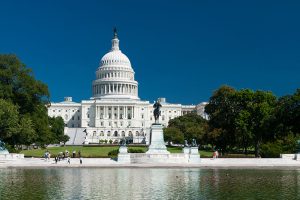NADA CEO Mike Stanton authored an article in mid-November that spelled out why many dealers feel that plug-in hybrids can serve as a crucial (and necessary) bridge to the 100% electric vehicle future that seems unrealistic given the current economic realities and the relatively short time frame that State and Federal officials are pushing to phase out gas-powered vehicles. Below is a modified version of Mike’s published piece, titled “Crossing the chasm on EVs may require plug-in hybrids.”
Consumer interest in EVs is real, strong, and growing. According to Escalent research, the proportion of “EV intenders” — new-car buyers that have a high propensity to shop for an EV — has climbed from 16% in 2020 to 25% in 2023, but the increasing interest in EVs is not translating into more purchases. (NOTE: In New Jersey, the current mandate calls for 22.5% of all vehicles sold to be EVs. Total EV sales in 2023 will likely come in right around 10% when all is said and done.)
So, if interest in EVs is up, but sales are plateauing and inventories are rising, what’s going on? The answer is most likely an age-old problem with bringing new technology into the market.
In the book Crossing the Chasm, author Geoffrey Moore describes the difficulty of transferring new technology from early adopters into the mass market. This problem is so universal and so difficult that Moore says there is effectively a “chasm” in the market between early adopters and the mass market that is nearly impossible for tech companies to cross.
While early adopters “find it easy to imagine, understand and appreciate the benefits of new technology,” early majority customers “share some of the early adopters’ ability to relate to technology, but ultimately … are driven by a strong sense of practicality.”
What’s Stopping Consumers?
EVs’ enhanced driving performance and record on the environment excite many early adopters. Early majority consumers are excited, too — but the real-life drawbacks of range anxiety, slow charging, and undeveloped charging infrastructure are keeping many from buying them.
In a survey by NADA, dealers report that 69% of consumers who decline to purchase an EV cite driving range as their chief concern. According to J.D. Power, four of the top five reasons for EV rejection relate to charging, with 76% of consumers citing at least one charging-related concern.
The state of America’s charging infrastructure bears this out. While there were about 54,000 charging stations nationwide at the end of 2022, there were three times that many gas stations — where refueling takes a small fraction of the time necessary to charge a battery.
Meanwhile, state and federal regulators are pushing EVs harder than ever.
The EPA has proposed that 67% of new cars sold be zero emission by 2032 — an approach even beyond the standards adopted by the California Air Resources Board (CARB). The CARB rules adopted in 2022 are supported by the automakers and allow for up to 20% of vehicles manufactured for sale in California and CARB states to be plug-in hybrids, a much more realistic approach than the EPA has laid out.
But current incentives for EV charging infrastructure and consumer incentives do not appear sufficient in pushing EVs across the chasm — at least not until fast charging is ubiquitous enough to ease mass-market consumers’ concerns.
A Potential Solution
If the goal of regulators is to decrease overall vehicle emissions, public policy should be focused on turning over the combustion fleet, getting consumers used to charging, and getting cleaner vehicles on the road.
Promoting plug-in hybrids may be the way to get EVs across the chasm. Many plug-in models utilize smaller batteries — with 20- to 50-mile electric ranges — in tandem with gasoline engines.
These vehicles can achieve zero emission commutes and are easy to charge at home with a 120- or 240-volt charger. Gasoline backups will also eliminate anxiety about finding an open fast charger. Plug-in hybrids continue to sell well, with sales up 51% year-over-year.
It’s hard to see a retail environment in 2032 where 67% of new-car sales are fully electric EVs (or 100% EV by 2035 here in New Jersey, as Governor Murphy has proposed). However, it’s very easy to see a 2032 where a majority of new-car sales are plug-in hybrids. Plug-ins would help ease consumers into the transition toward EVs, get consumers used to charging, create the demand necessary for investments in the charging network, and build a bridge across the chasm to bring EVs to the mass market.
State and federal policymakers should ensure that plug-in hybrids are included in future regulations and incentive programs. Doing so would ensure that early majority consumers can make their next vehicle an EV.








